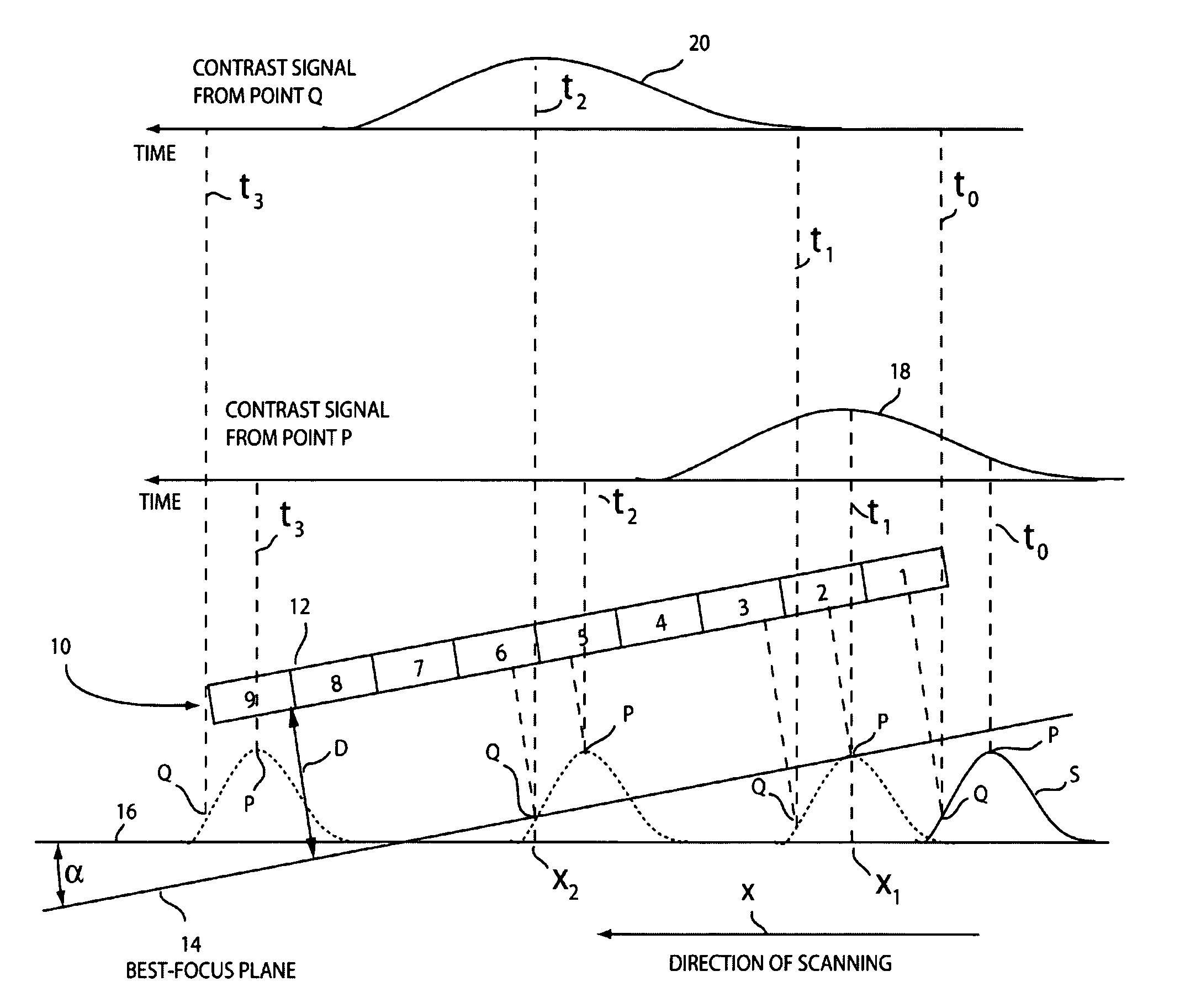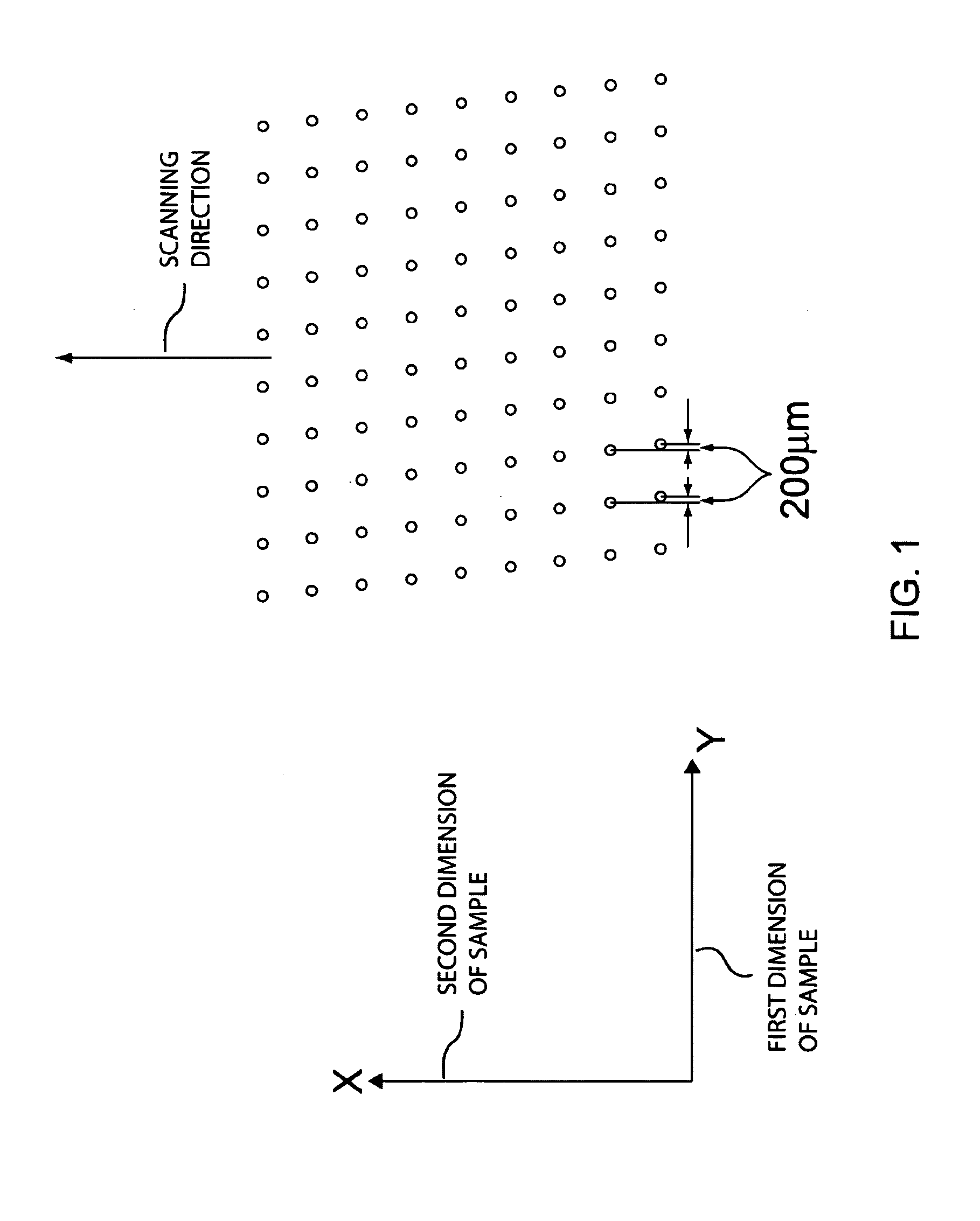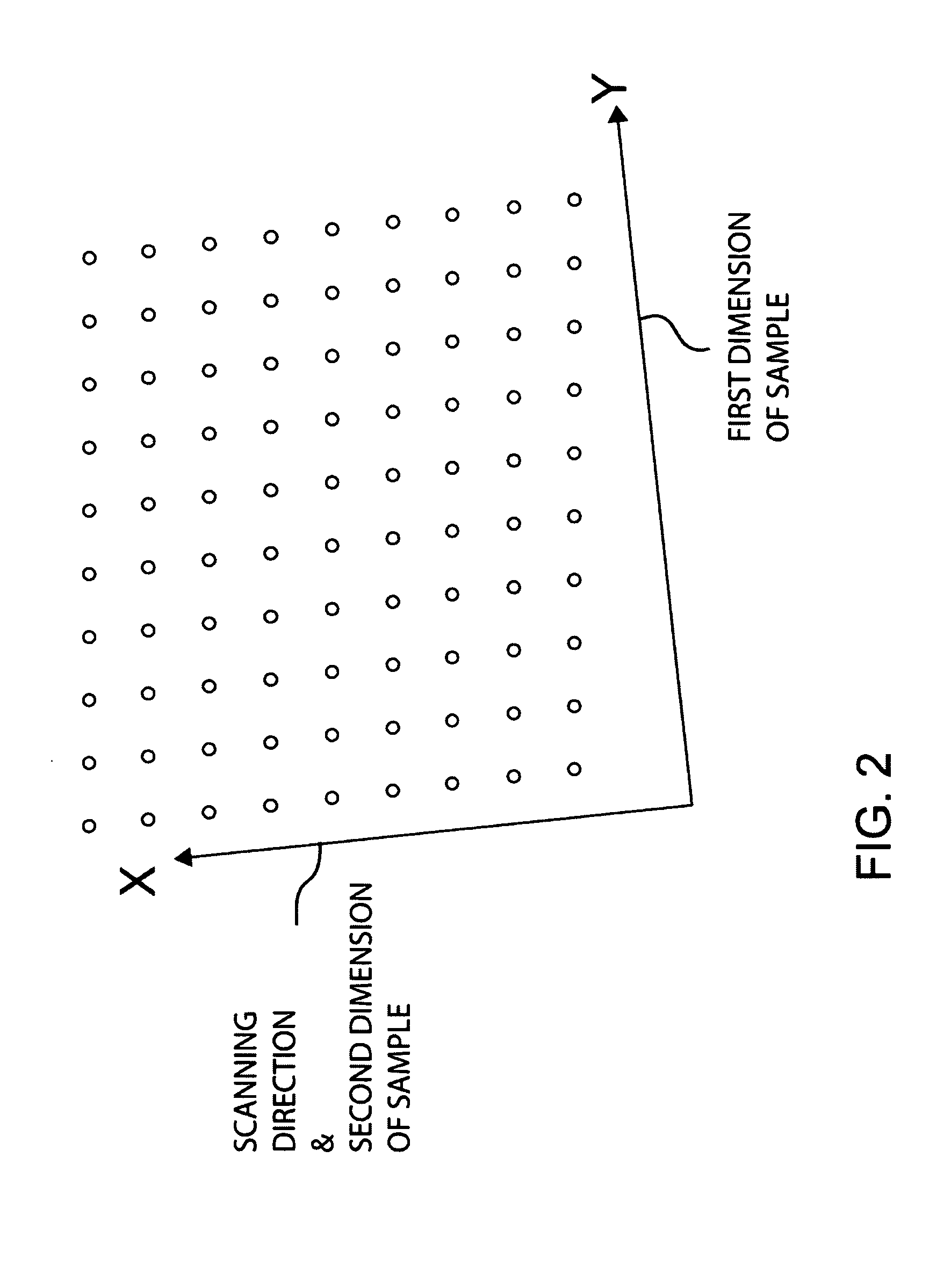Best-focus estimation by lateral scanning
a scanning array microscope and best focus technology, applied in the field of microscopy, can solve problems such as interference effects that modulate intensity, and achieve the effect of improving image quality
- Summary
- Abstract
- Description
- Claims
- Application Information
AI Technical Summary
Benefits of technology
Problems solved by technology
Method used
Image
Examples
Embodiment Construction
[0030]The invention is based on the realization that the best-focus position of a sample being imaged by an array microscope can be estimated by continuously scanning the sample surface along a plane that is tilted with respect to the array's best-focus plane. By scanning the sample across the tilted best-focus plane of the array microscope, the axial positions of points being imaged under best-focus conditions can be directly identified as a result of a single scan. If required, the best-focus position of the other points on the surface can be estimated by interpolation or other technique. Thus, with a single measurement it is possible to generate data that can then be used advantageously to improve the image quality during a subsequent measurement scan.
[0031]As used herein, the term “microscope” is used with reference to both the array microscope and the individual miniaturized microscopes within the array, and it is assumed that the distinction will be apparent to those skilled i...
PUM
 Login to View More
Login to View More Abstract
Description
Claims
Application Information
 Login to View More
Login to View More - R&D
- Intellectual Property
- Life Sciences
- Materials
- Tech Scout
- Unparalleled Data Quality
- Higher Quality Content
- 60% Fewer Hallucinations
Browse by: Latest US Patents, China's latest patents, Technical Efficacy Thesaurus, Application Domain, Technology Topic, Popular Technical Reports.
© 2025 PatSnap. All rights reserved.Legal|Privacy policy|Modern Slavery Act Transparency Statement|Sitemap|About US| Contact US: help@patsnap.com



